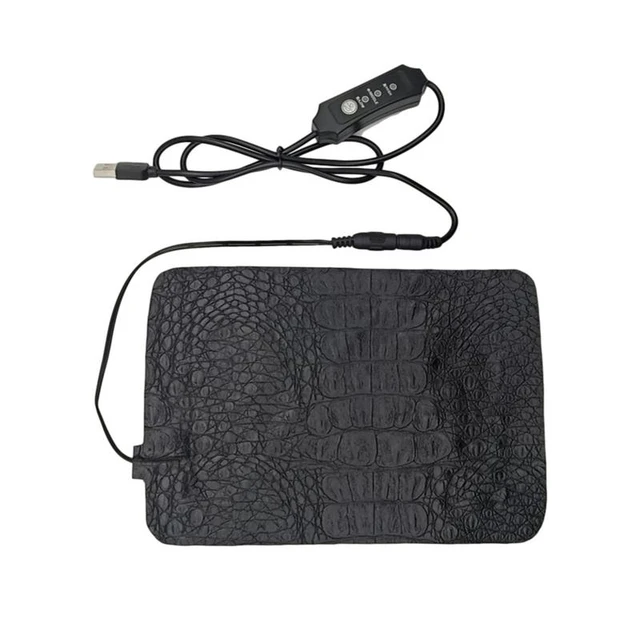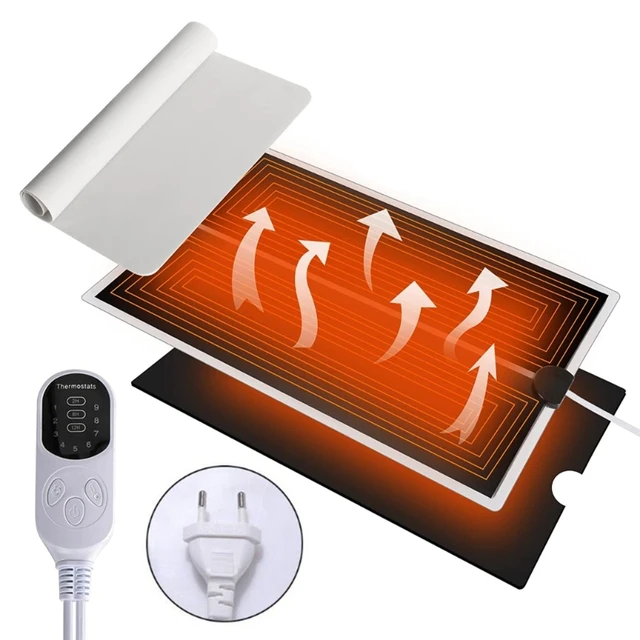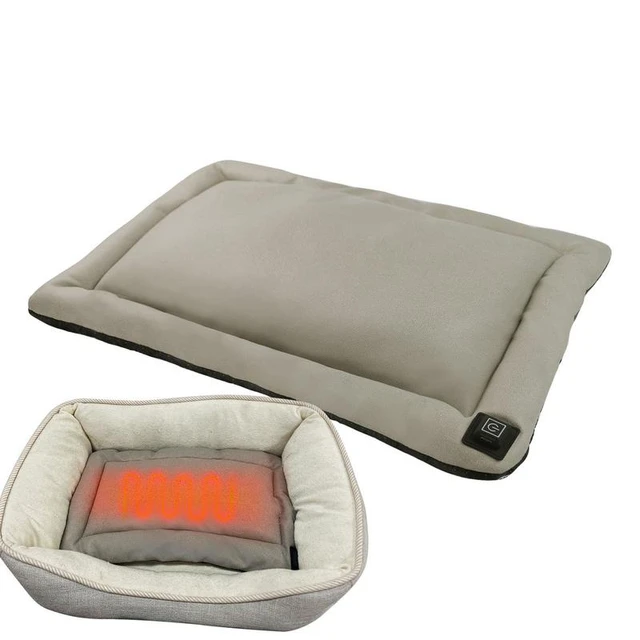How to Make and Care for a Rice Filled Heating Pad?
Rice filled heating pads are an excellent natural remedy for providing soothing warmth and relief from aches and pains. These DIY pads can be customized to suit personal preferences and are easy to make at home. If you’re curious about creating your own rice filled heating pad or need tips on maintaining one, this comprehensive guide covers everything you need to know. From selecting materials to using and caring for your heating pad, let’s dive into the details and discover the benefits of this simple yet effective remedy.

Choosing the Right Materials
Selecting high-quality materials is crucial for making an effective and safe rice filled heating pad.
Fabric selection
Choose a durable, heat-resistant fabric such as 100% cotton or flannel. These materials can withstand repeated heating and are soft against the skin. Avoid synthetic fabrics, as they can melt or release harmful chemicals when heated.
Choosing the rice
Opt for plain, uncooked rice. Long grain, short grain, or any type of white rice will work well. Avoid instant or flavored rice, as additives can affect the heating pad’s performance and safety.
Additional fillers
For added aromatherapy benefits, consider incorporating dried herbs or essential oils into the rice mixture. Lavender, chamomile, and eucalyptus are popular choices for their relaxing scents. Ensure any additions are dry to prevent the growth of mold or bacteria.
Making Your Rice Filled Heating Pad
Follow these steps to create a customized rice filled heating pad at home.
Cutting the fabric
Cut two equal pieces of fabric to your desired size. Common dimensions range from a 8×8 inch square for small pads to a 10×18 inch rectangle for larger pads.
Sewing the fabric
Place the two pieces of fabric together, with the right sides facing each other. Sew three sides of the fabric pieces together using a sewing machine or by hand, leaving one side open for filling. Turn the fabric right side out after sewing.
Filling with rice
Using a funnel, fill the fabric pouch with rice. Fill the pouch about two-thirds full to allow the rice to move and conform to your body when heated. If adding dried herbs or essential oils, mix them with the rice before filling the pouch.
Sealing the pad
Sew the open side of the fabric pouch closed, ensuring there are no gaps where rice can escape. Double stitch for added durability.
Using Your Rice Filled Heating Pad
Proper usage ensures you get the maximum benefit from your rice filled heating pad while maintaining safety.
Heating instructions
Place the rice filled heating pad in the microwave and heat it on high for 1-3 minutes, depending on the size of the pad. Start with shorter heating times and gradually increase to find the optimal temperature. Always monitor the heating process to prevent overheating.
Comfortable application
Apply the heated pad to the desired area, such as your neck, shoulders, or back. The pad should provide gentle warmth without causing discomfort or burns. Avoid using the pad directly on your skin; place a thin cloth or towel between the pad and your skin if it feels too hot.
Cooling option
Your rice filled heating pad can also be used as a cold pack. Place the pad in a sealed plastic bag and store it in the freezer for at least one hour. The cooled pad can help reduce swelling and inflammation.
 Caring for Your Rice Filled Heating Pad
Caring for Your Rice Filled Heating Pad
Regular care and maintenance prolong the usability and safety of your heating pad.
Spot cleaning
Avoid immersing the rice filled heating pad in water, as this can cause the rice to clump and mold. Instead, spot clean the fabric with a damp cloth and mild detergent. Wipe gently and let the pad air dry completely before using it.
Helping to remove odors
Over time, your heating pad may develop odors from frequent use. To freshen the pad, place it in a sealed plastic bag with a small bowl of baking soda. Leave it overnight to absorb any lingering smells.
Replacing the rice
If the rice inside the pad becomes stale, clumped, or loses its ability to retain heat, consider replacing it. Open the seams of the fabric, discard the old rice, and refill the pouch with fresh rice, sewing it closed again.
Safety Tips
Follow these safety guidelines to ensure the safe use of your rice filled heating pad.
Avoid overheating
Never leave the heating pad unattended while microwaving. Overheating can scorch the fabric or cause the rice to burn, presenting a fire hazard. Always heat the pad in short intervals and test the temperature before application.
Check for wear and tear
Regularly inspect the heating pad for signs of wear and tear, such as frayed fabric or seams coming apart. Repair any damage promptly to prevent accidents and ensure the heating pad’s longevity.
Store properly
Store your rice filled heating pad in a cool, dry place when not in use. Avoid storing it in damp or humid environments to prevent mold growth.
Benefits of Using a Rice Filled Heating Pad
Discover the various advantages of incorporating a rice filled heating pad into your routine.
Natural pain relief
The heat from a rice filled heating pad helps to relax muscles, alleviate tension, and provide natural pain relief. It’s particularly effective for soothing aches related to menstruation, arthritis, and muscle strains.
Customizable and reusable
Unlike single-use heat packs, rice filled heating pads are reusable and customizable. You can add your favorite scents or create pads in different sizes and shapes to suit your needs.
Eco-friendly option
Rice filled heating pads are an eco-friendly alternative to disposable heat packs. Made from natural materials, they generate minimal waste and can be reused for years with proper care.
Creating Different Shapes and Sizes
Tailoring the size and shape of your heating pad optimize its functionality for specific body parts.
Neck and shoulder wrap
Create a long, narrow pad that can drape comfortably around your neck and shoulders. This shape provides targeted relief for upper body tension and stiffness.
Hand warmers
Smaller rice filled pads make excellent hand warmers. Sew small square or rectangular pads that can fit in your pockets for portable warmth during cold weather.
Back and abdomen pad
For larger areas like the back or abdomen, design a rectangular or square pad that provides ample coverage. This allows for effective heat distribution to larger muscle groups.
Incorporating Aromatherapy
Enhancing your rice filled heating pad with aromatherapy can provide additional therapeutic benefits.
Choosing the right essential oils
Select essential oils known for their calming and soothing properties. Popular options include lavender for relaxation, eucalyptus for respiratory relief, and peppermint for its cooling effect.
Mixing and matching
Experiment with different essential oil blends to create a personalized aromatherapy experience. Combine lavender and chamomile for a sleep aid or peppermint and rosemary for muscle relief.
Applying essential oils
Add a few drops of essential oil to the rice before filling the fabric pouch. Mix well to ensure even distribution. Be cautious not to add too much oil, as excessive moisture can affect the rice.
DIY Gift Ideas
Rice filled heating pads make thoughtful and practical DIY gifts for friends and loved ones.
Personalized gifts
Customize the fabric and scents to suit the recipient’s preferences. Choose their favorite colors, patterns, and essential oil blends for a personalized touch.
Gift sets
Create a gift set by pairing a rice filled heating pad with other self-care items, such as essential oils, lotion, and herbal tea. Package everything in a decorative box or basket for a complete pampering experience.
Include instructions
Provide a set of heating and care instructions with the gift. This ensures the recipient knows how to use and maintain their new heating pad properly.
 Troubleshooting Common Issues
Troubleshooting Common Issues
Address common issues that may arise with your rice filled heating pad to ensure optimal performance.
Pad not heating evenly
If your pad isn’t heating evenly, try redistributing the rice by gently shaking the pad before microwaving it. Ensure the microwave turntable is functioning correctly to promote even heating.
Burnt smell
A burnt smell can indicate overheating or scorching. Reduce heating times and monitor the microwave closely. If the smell persists, replace the rice and check for damage to the fabric.
Inconsistent temperature
Inconsistent temperatures can result from uneven rice distribution or a faulty microwave. Ensure the rice is evenly spread within the pouch, and test the heating pad in a different microwave if necessary.
Conclusion: Enjoy the Benefits of Your Rice Filled Heating Pad
Creating and maintaining a rice filled heating pad offers numerous benefits, from natural pain relief to customized aromatherapy. By selecting the right materials, following the proper steps for making and using the pad, and adhering to care and safety guidelines, you can enjoy a reliable and soothing source of warmth. Whether for personal use or as a thoughtful gift, rice filled heating pads are a versatile and eco-friendly addition to any self-care routine. Embrace the simplicity and effectiveness of this DIY solution and experience the comfort it brings.